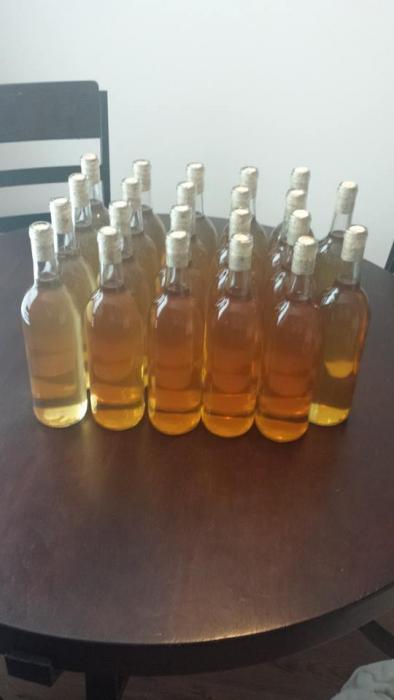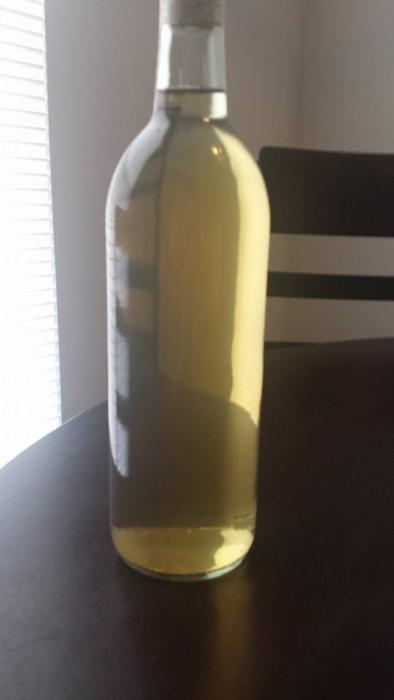Sorry to res an old thread, but I figured someone might appreciate my experience with this yeast.
I didn't take a FG, but it ended up being the best mead I've had. My family likes it sweet. What I've done in the past is use champagne yeast, and then back sweeten. It would end up being really strong with a bite, and a little sweet from back sweetening. With this one it was just perfect. Good balance of sweet and bitter from alcohol. It tasted really really good.
Brother, it's your thread, so if you wanted to add to it, then that's great, especially as people often forget to close, or post a conclusion to a problem/question.
It's most excellent to read that it's worked out fine and that the mead is a good one.
I find that a lot of people, particularly here, don't "get the point" i.e. that with meads mentioned in documents from antiquity, that there's not samples left, that they didn't understand fermentation or even yeasts (other than they can make stuff "go bad"), etc etc.
These so called "mead yeasts" are little more than marketing nonsense. I haven't read of any academic papers where ancient samples, or residue was used to get a DNA profile, to enable any yeast producer to replicate a "genuine" mead yeast.
If they have "mead" in the title, then people, particularly those less experienced, will jump at them, thinking that they're the right stuff to use. I'm not saying that the makers won't have done some sort of research etc, but I really don't believe they should be marketed like this.
This particular yeast, I've tried 3 times and had problems each time (albeit earlier in my mead making). I've learned a lot since then (and yes, reading your thread is making me think that perhaps it's time I tried it again), but right now, I don't like it much at all, I had 2 attempts where it just didn't start at all and one that started but promptly stuck at about the 1.050 mark.
So currently it resides in my "waste of money, finicky PITA" list......
One of the issues I notice, particularly here at HBT, is that people have problems because they try too hard to use beer making type methods i.e. "all the fermentables in up front". Yet they use a wine yeast with a 14, 16 or even 18% ABV tolerance. So they pile a sh1tload of honey in, get a higher than necessary gravity and then wonder why they have problems ("it's never happened with my beer making" being a favourite moan). With that in mind I often find myself wanting to scream at them "cos it's not f*****g beer is it".
Now I notice that for your first few posts, you didn't include a gravity reading, but on the basis of experience and knowing that you will have likely used a "US gallon" measure, 15lb in 5 gallons would have given you quite a reasonably high gravity - well reasonable when using a dry wine yeast, rather than a liquid one.
Dry active yeasts have much higher cell counts than liquid yeasts that seem to be preferred by beer makers. This yeast has a published tolerance of 11% ABV, which would have equated to a drop of about 80 to 81 gravity points. The more extra sugars you have in the must above the required amount to the approximate target strength, the harder it is for the yeast to get going, or as you found out, not that they didn't get going but just that they took a lot longer in their lag phase as the colony was developing enough to show signs of active fermentation.
Now if it did indeed drop a bit more than 80 or so points to give you a bit more than 11%, thats fine. A lot of the published tolerance numbers will have been derived from wine musts or beer worts. Mead/honey musts are a little harder to work out, as honey doesn't naturally have the nutrient elements that grape/fruit/malt type mixes have.
Your comment about "can I over feed yeast" ? Well, it would seem that we are routinely under feeding them. Yes, you can over feed, but any nutrients and nitrogen elements added that the yeast don't use, will be left in the must and may be available for any spoilage organisms that can get to them.
This link is from an article that the great Ken Schramm wrote some years back in Zymurgy magazine. Some of it is a bit "sciencey", but equally, it gives some guidance of nitrogen levels that should be considered. Personally I prefer to use FermaidK and DAP for nutritional requirements, because it's got good published data to work out what you need (in parts per million per gramme per litre) so you can work out in some detail what you're likely gonna need, and tailor your amounts accordingly.
Given what I've alluded to above, it might have been easier for you to have made the must up a bit lower gravity-wise, then added small increments of honey to boost the gravity a.k.a. step feeding, so the yeast might have had an easier time of life to start with (the comment of "you've only had it going for X hours and are worrying about a problem" was quite fair, especially if you come from a beer making background - beers seem to routinely start fermenting much faster, from what I've read anyway).
Hopefully that lot will give you some more suggestions to think on for any other batches you make - truly, it's not hard, but it's a bit different from beers and wines, and can take a bit of consideration before piling in and pitching the yeast.
Again, I'm glad to read it's turned out good. If I do try that bloody yeast again, I'm likely to make a starter first, rather than just hoping that the pack does it's thing, post-smack that is. Here, and over at
Gotmead, there's some posts about people using the 1388 Belgian ale yeast, but it seems that after smacking the yeast pack, some have had them swell within the suggested period, while others have had to wait nearly 24 hours for the pack to do it's thing. Suggesting that it may indeed need the starter method. I can't say for certain, I haven't tried the 1388 yet.....
Good luck with any other batches you try........




